Course Reviews
Terras da Comporta: Portugal’s New Golf Destination
Explore 33,000+ golf courses in 180 countries.
Follow the latest news and trends in golf.
Connect with like-minded golfers.
Find everything you need for your golf equipment and gear needs.
Travel, golf resorts, lifestyle, gear, tour highlights and technology.
All Square
Suggestions
Course Reviews
Terras da Comporta: Portugal’s New Golf Destination
Course Reviews
Discover the Underrated Golf Courses of Eastern Europe
Destinations
Top Bucket-List Events Every Golfer Should Attend
Course Reviews
Riviera Fairways: Glamour Golf in the South of France
All Square
Golf & Gastronomy: Pairing Michelin Stars with Perfect Swings
Abu Dhabi HSBC Championship
Aaron Rai’s Winning WITB at Abu Dhabi HSBC Championship
Clubs
Inside Ben Griffin’s Winning Bag at the 2025 WWT Championship
Clubs
The Most Popular Driver Shafts on the Market?
Destinations
Explore Adare Manor — 2027 Ryder Cup Destination
Course Reviews
The Best 36-Hole Golf Resorts Around the World
Course Reviews
The Best Golf Courses Near Pinehurst That Aren’t Pinehurst No. 2
DP World Tour
The Top 10 Greatest Upsets in Golf Tournament History
DP World Tour
Who Is the Best Driver of the Golf Ball So Far in 2025?
Course Reviews
Kytäjä Golf & Uni Villa: Finland’s Lakeside Golf Retreat
Course Reviews
Golf Trip to Oman
DP World Tour
The Top European Golfers of All Time
Clubs
Michael Brennan’s Breakthrough Victory at the Bank of Utah Championship
Clubs
Who Is the Best Wedge Player on Tour So Far This Season?
Clubs
The Best Drivers and Fairway Woods on the Market
Course Reviews
The New Wave of Short Courses
Course Reviews
The Els Club Vilamoura: Golfing Grandeur in the Algarve
Gear
Golf Shoes Reviews 2025: Top Picks and Trends
Destinations
Arabella Golf Resort Mallorca Unveils New Brand Identity
Destinations
Golf & Gastronomy in SO/ Sotogrande
Course Reviews
The Golf Lover’s Guide to Andalusia, Spain
Course Reviews
Tazegzout Golf Course: A Coastal Gem in Taghazout Bay
When most golfers think of Europe, their minds drift to the rolling links of Scotland, the dramatic cliffside holes of the Algarve, or the storied fairways around Dublin. But tucked into the forested hills, thermal valleys, and seaside cliffs of Eastern Europe are some truly special golf courses — hidden gems that many players overlook. These places offer not only great golf but also rich cultural experiences, often at a fraction of the price (and crowds) compared to Western Europe’s bucket-list destinations.
Golf in Eastern Europe is still growing, and in many countries participation rates are well below the European average. According to a KPMG report, the average number of golfers per course in Eastern Europe is about 302, roughly half of the average in Western Europe. That underdevelopment means that many courses remain underrated, unheralded, but incredibly playable and scenic.
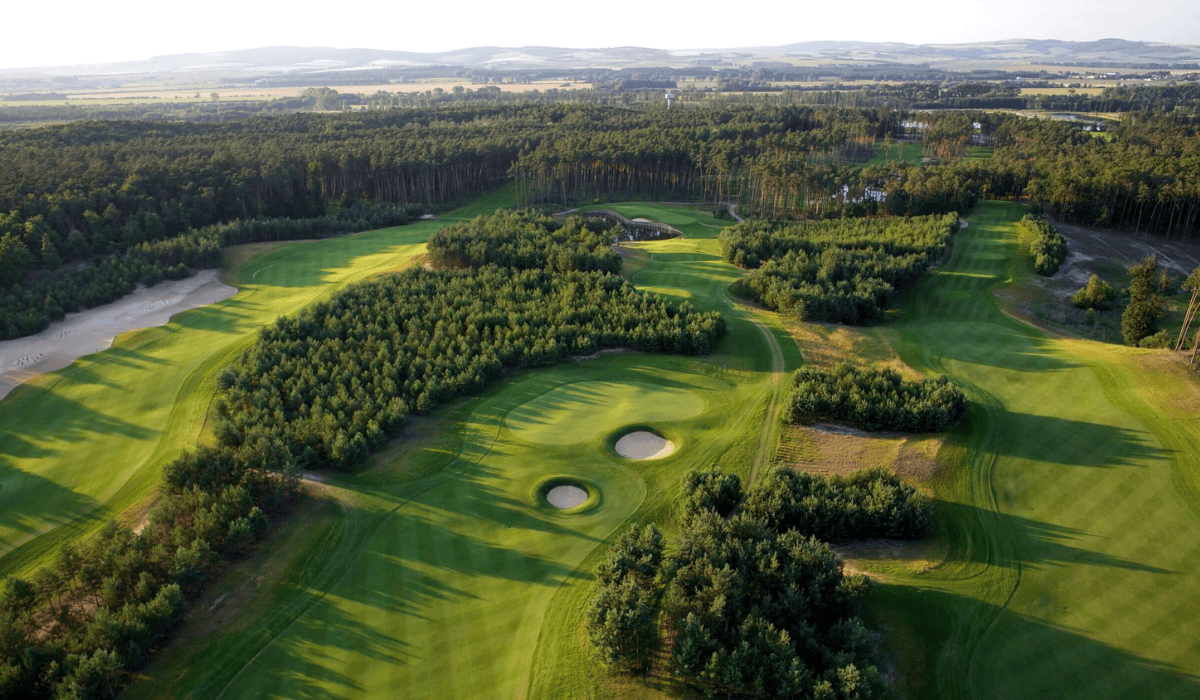
One of the crown jewels of this understated region is Penati Golf Resort, located near Šajdíkové Humence in western Slovakia. Spread across 217 hectares in the Záhorie region, the resort boasts two 18-hole courses — the Legend Course and the Heritage Course.
The Legend Course was designed by Nicklaus Design and features wide, undulating fairways, deep bunkers, and large greens, offering strategic choices for golfers of all levels. But perhaps its most famous feature is the 712-meter 15th hole, considered the longest in Central Europe (and once, reportedly, in all of Europe). From eleven different tee boxes, this par-5 — or even par-6 setup — demands both length and careful planning.

The final hole of Legend is no less dramatic: a narrow approach to an island green that floats on water, giving the finishing stretch a theatrical feel. The Heritage Course, crafted by Jonathan Davison, evokes the charm of classic British woodland courses, with streams crossing fairways, water guarding greens, and a more traditional layout.
What makes Penati especially playable is its sandy subsoil, which absorbs rain very fast, preserving good course conditions even after wet weather. Its proximity to Bratislava (under an hour’s drive) and even Vienna makes it surprisingly accessible for an off-the-beaten-path golf adventure.
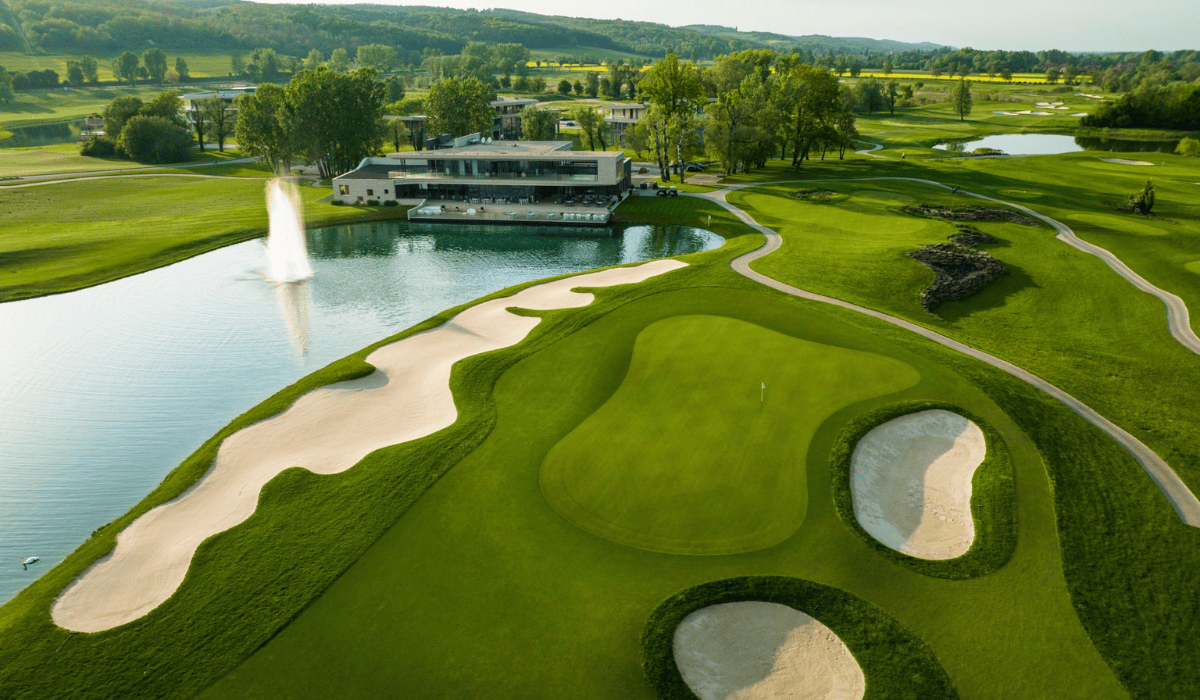
Just as compelling is Zala Springs Golf Resort, situated in Hungary’s Zala Valley, surrounded by vineyards, lakes, and gently rolling hills. The course was designed by Robert Trent Jones Jr., one of the world’s most respected golf architects, and opened to great praise in 2015.
This 18-hole championship course stretches over 6,351 meters (par 72) and features four different tees, making it flexible for both beginners and seasoned golfers. The design cleverly uses the natural terrain: you can choose to fly the ball to the green or use ground play, and fairway grass shapes and slopes give hidden strategic options.
Beyond the course itself, Zala Springs is part of a luxury resort: you can stay in suites that overlook the course, relax in a thermal spa, or dine in their bistro after a round. In fact, the resort has been nominated for Hungary’s Best Golf Course by the World Golf Awards.
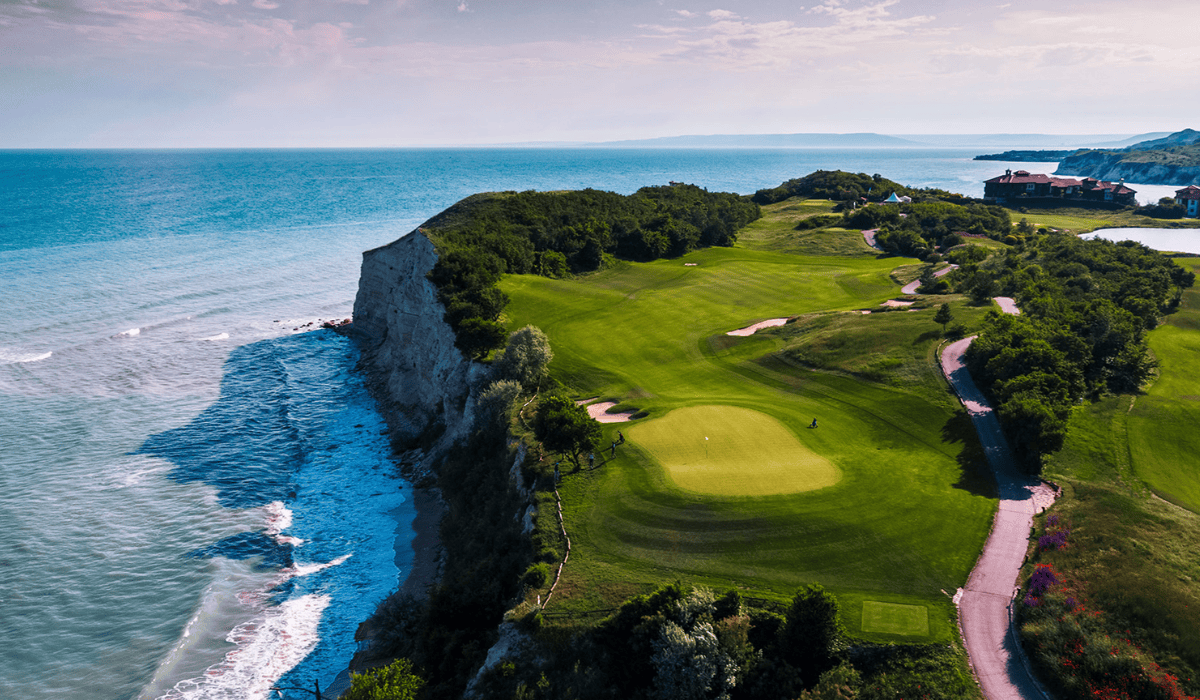
Bulgaria is home to some stunning seaside courses that remain largely undiscovered. Thracian Cliffs, perched dramatically on the Black Sea cliffs near Kavarna, is often called the “St. Andrews of the Balkans.” Designed by Gary Player, the course offers breathtaking cliffside views and challenging holes with dramatic elevation changes. A round here combines both golfing skill and a feast for the eyes, especially at sunset when the sea and course glow in golden light.
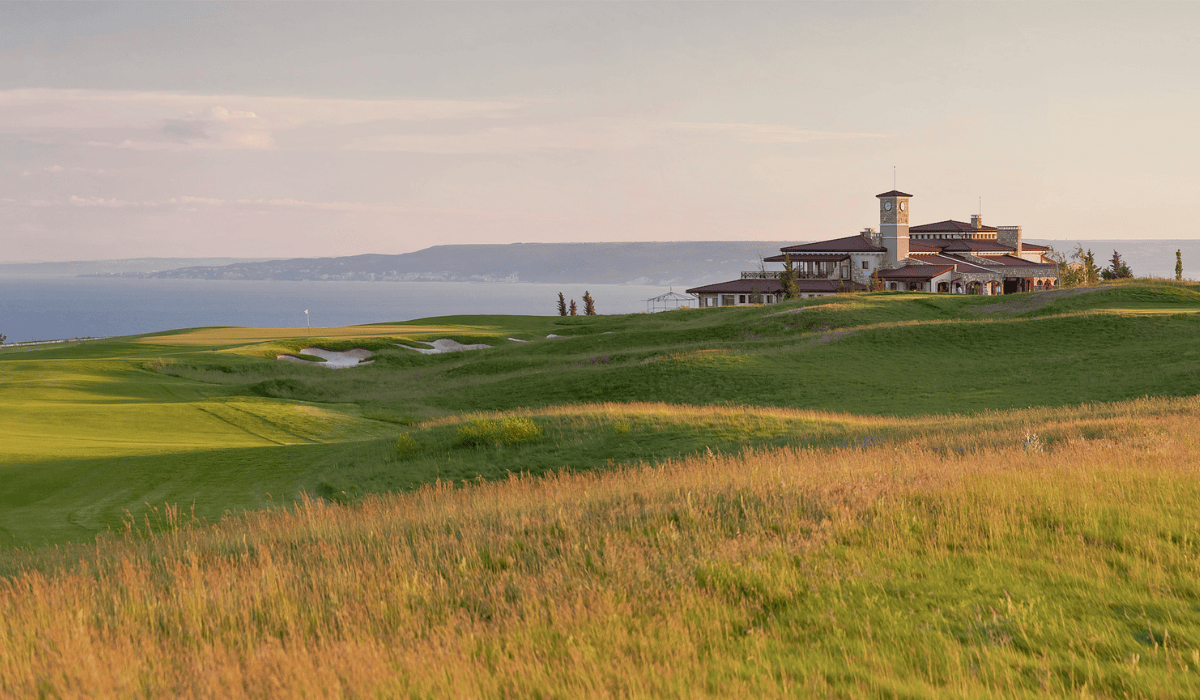
Nearby, BlackSeaRama Golf & Villas, designed by Ian Woosnam, provides a complementary experience with rolling links and strategically placed bunkers. Both resorts are part of the larger Black Sea Coast golf corridor, offering multiple courses within easy reach and luxury accommodations with seaside panoramas.
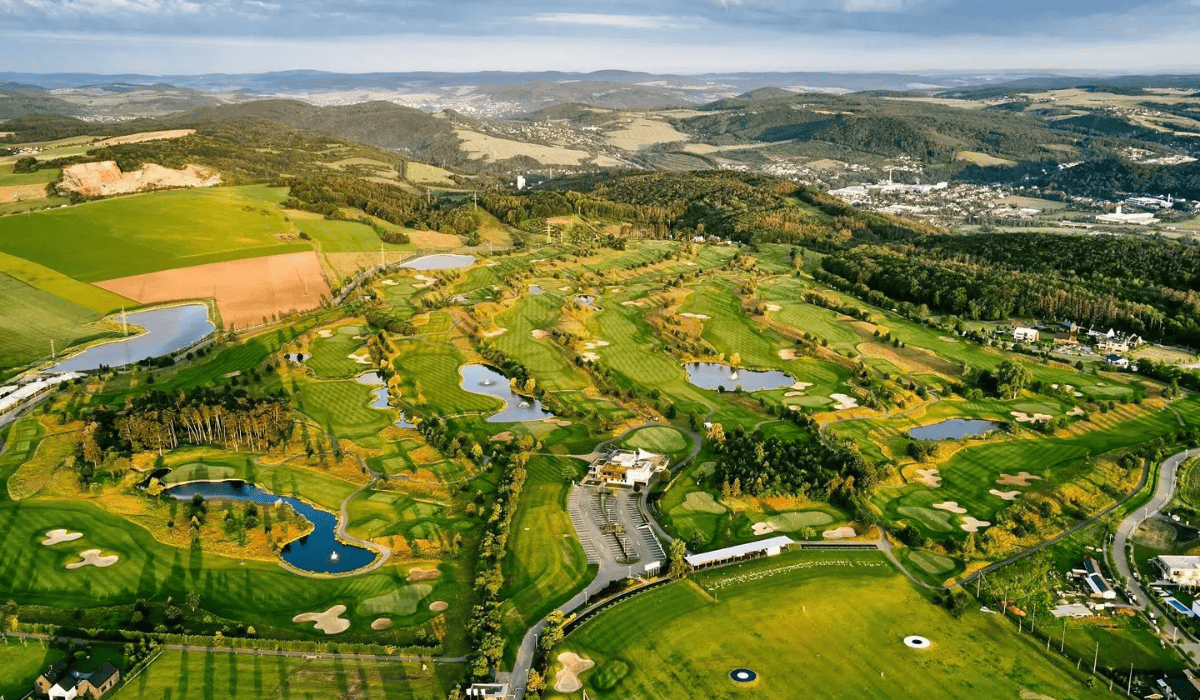
The Albatross Golf Resort near Prague is a must-play for golf enthusiasts seeking high-quality courses without heavy crowds. Opened in 2003, it has hosted several European Tour events and offers championship-level fairways, meticulously maintained greens, and scenic water hazards. Unlike busier Western European venues, players here enjoy a more relaxed pace while still experiencing world-class golf. Its combination of forested holes and open landscapes creates variety that tests all aspects of a golfer’s game.
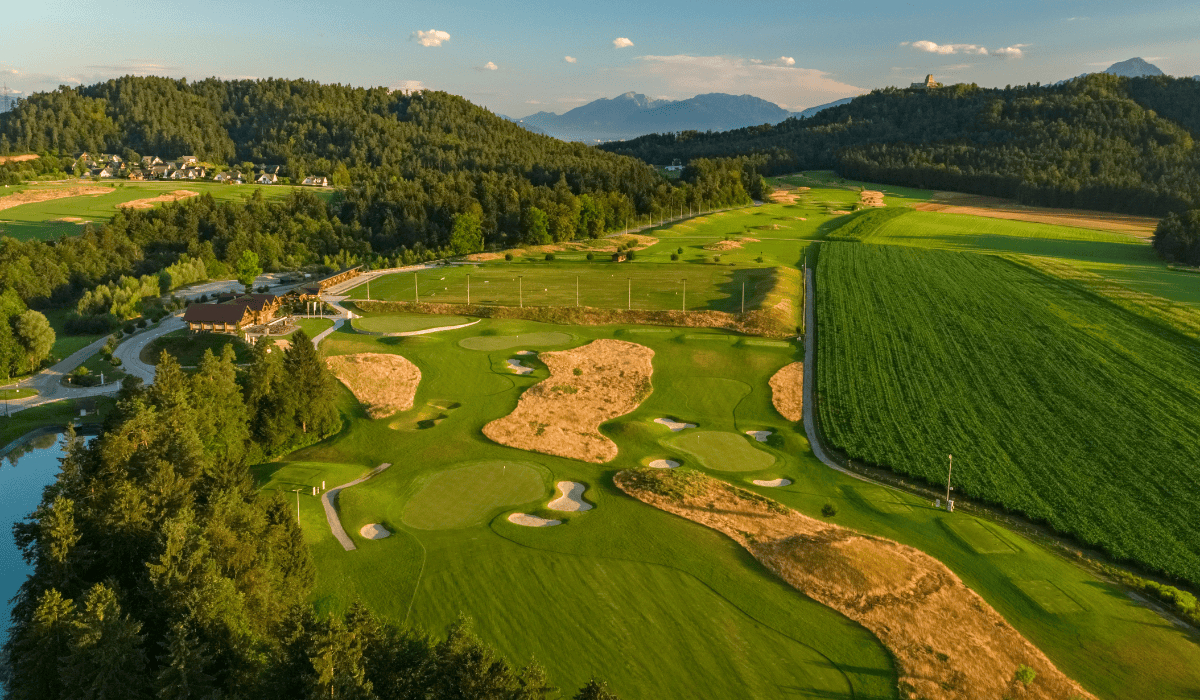
Slovenia’s Diners Golf & Country Club Ljubljana may not appear on every golfer’s radar, but it offers a delightful experience in the rolling hills of central Slovenia. Designed to harmonise with the surrounding landscape, the course challenges golfers with water hazards, strategically placed bunkers, and beautiful tree-lined fairways. Beyond golf, players can explore Ljubljana, a charming city known for its bridges, cafes, and rich cultural history.
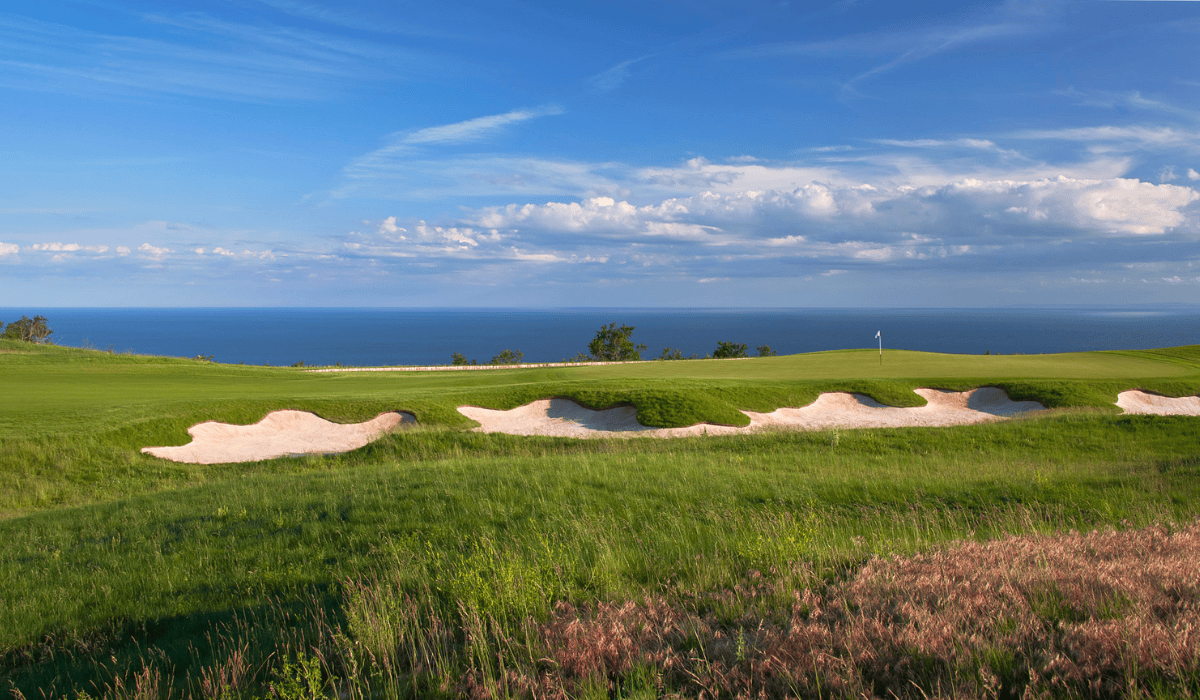
What makes these Eastern European courses especially compelling isn’t only the golf, but the larger experience. In countries like Slovakia, Hungary, Bulgaria, the Czech Republic, and Slovenia, golf is still intimate — fewer crowds, more space, and often a strong connection to nature and local culture. Tee times remain refreshingly inexpensive, and accommodation and dining are often more affordable than in Western Europe.
Furthermore, the region’s historical and natural appeal is powerful. Golfers can pair their rounds with wine-tasting in Hungarian valleys, thermal spa visits, seaside walks along the Black Sea, or cultural excursions in Central Europe. Eastern Europe’s lower participation rates suggest that many of these courses are still “sleeping beauties,” waiting for more golfers to discover them.
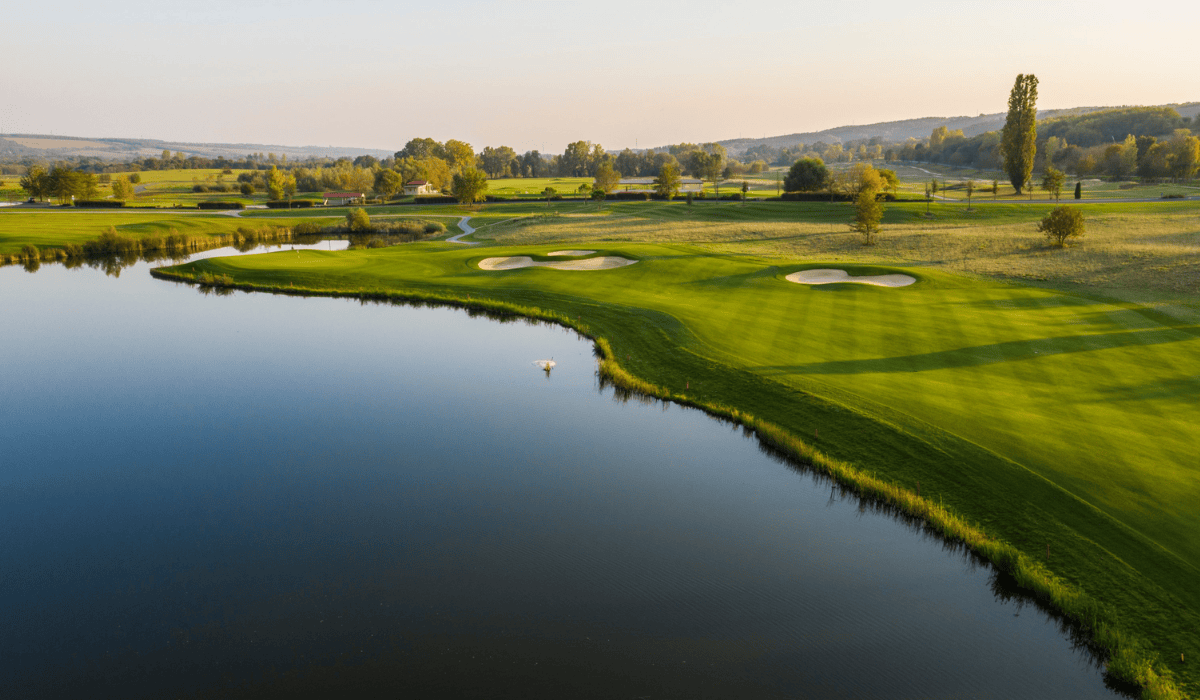
Eastern Europe is not just an alternative; it’s a place to rediscover what golf is truly about — strategic thinking, natural beauty, and cultural immersion. From the cliffside majesty of Thracian Cliffs to the forested serenity of Penati, these courses offer challenges, relaxation, and a sense of adventure that more mainstream destinations sometimes lack.
For golfers looking to step off the beaten path and experience something truly different, Eastern Europe is a hidden treasure — not entirely undiscovered, but still offering the thrill of exploration.